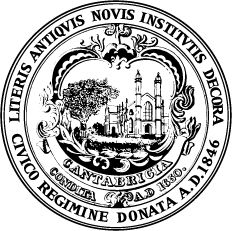Teams developing projects to be installed in 2024:
Gabriel Cira and Matthew Okazaki: Gabriel Cira and Matthew Okazaki practice collaboration – with community groups, nonprofits, scientists, advocates, artists, students, and friends. They believe common-izing spatial thinking and material knowledge helps build collective power and a sense of belonging in the public realm. Cira is a licensed architect and Assistant Professor in the History of Art at MassArt. He received a Master in Architecture from Princeton University. Okazaki is a Professor of the Practice in the History of Art and Architecture at Tufts University and received a Master of Architecture from Harvard University.
The MIRROR is an interdisciplinary team composed of Buildingways, Citizens of the World, Equity Roadmap, Olin College of Engineering, and Pneuhaus alongside international architectural collaborator Yusuke Obuchi Laboratory. The group brings expertise from community organizing to computer science, from restorative justice to youth-centered placemaking. We are guided by the question: “What can we do together, as a network of nonprofit partners, a community, and a college, that we can't do alone?”
Alejandro Saldarriaga: Alejandro Saldarriaga Rubio is a Colombian architect who was born and raised in Bogota. He has had an international professional trajectory, having lived and worked in various countries including Denmark, Switzerland, and the United States. He holds a master's degree in architecture from the Harvard Graduate School of Design. In 2020, he founded his architecture practice, ALSAR-ATELIER, during the midst of the pandemic. The studio is dedicated to investigating low-cost and low-tech design solutions for global states of emergency, focusing on sustainable construction methods and community engagement. He currently resides in Cambridge MA and will be joining the Northeastern University Faculty as a Research/ Teaching fellow for the 2023-2024 academic term.
Teams developing projects to be installed in 2025:
Carolina Aragon: Carolina Aragón is an associate professor of Landscape Architecture at the University of Massachusetts Amherst and the director of Art for Public Good Group. Her award-winning creative work blends artistry and transdisciplinary practices that bring together research, craft, and community engagement to address issues of climate change and environmental justice. Carolina’s artwork has been recognized by national and international organizations. In 2021, her FutureSHORELINE project was awarded the Climate Change Communication Award “Rebecca Ballestra” by the Euro-Mediterranean Center on Climate Change. Carolina was named as one of the top 25 Creative Revolutionaries by the CODAworx organization in 2020. Her artwork has been displayed at the World Bank’s Art of Resilience Exhibition 2019 in Washington, DC, as well as showcased in multiple venues, including the U.S. National Park Service’s video: 100 Years of Arts in the Parks.
Calvin Zhong + Justin Brazier: Justin Brazier is an architectural designer based in Boston, interested in sustainable architecture, housing, food security, and cultural spaces for historically under-represented and under-served communities. Calvin Zhong is a spatial designer, fabricator, and informal cultural critic. Together, they are one-half of the design collective, Architecture Group of New York, which currently operates out of Cambridge, Chilé, and Mexico City. They work on books, exhibitions, advertisements, fashion, research, websites, and last, but not least, architecture.







